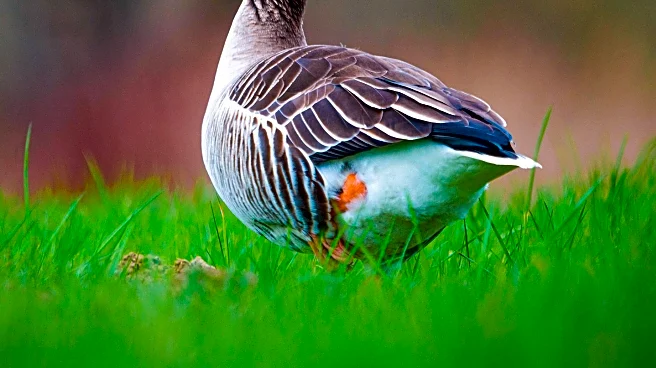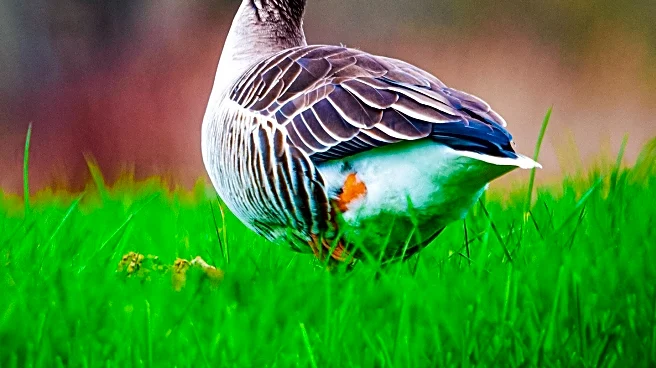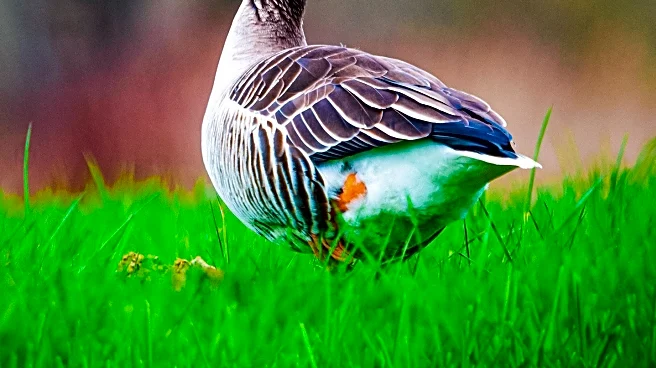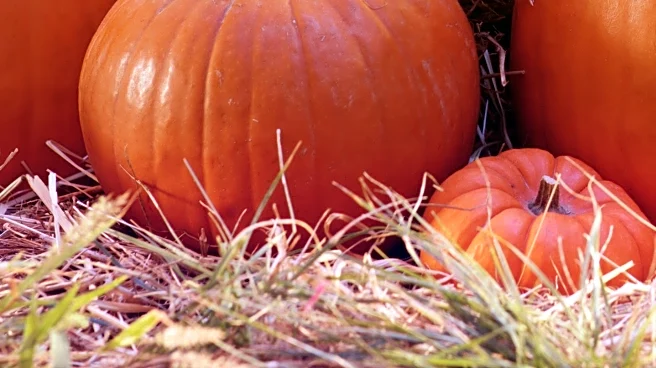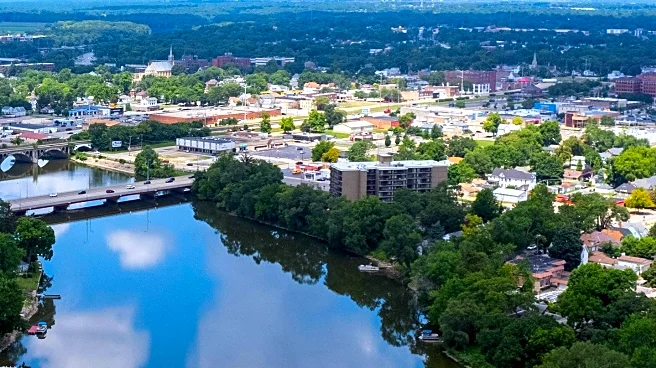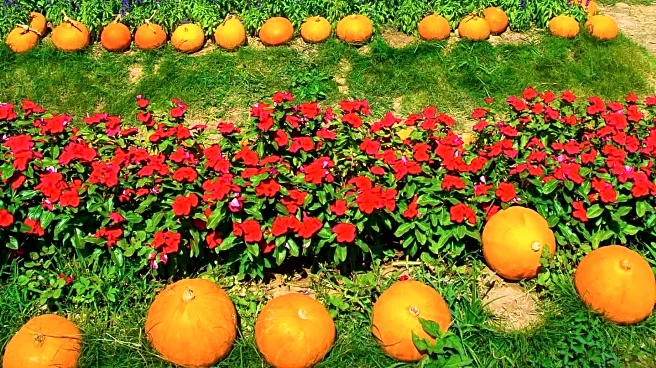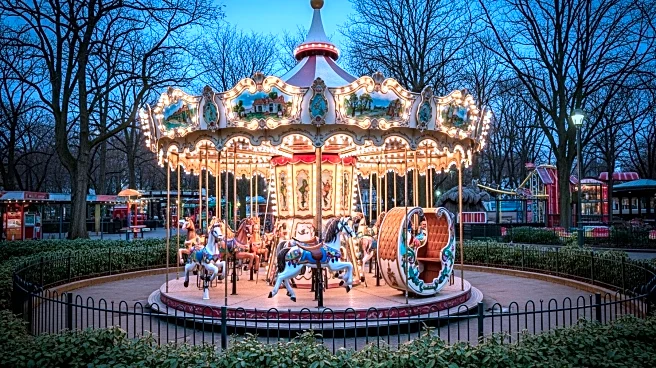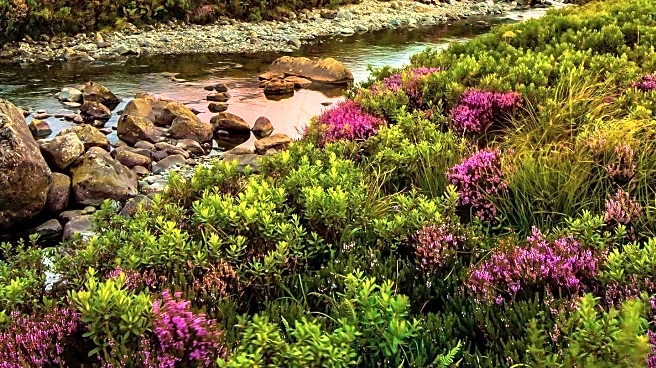What's Happening?
A market town in Cambridgeshire, known for its gaggle of geese, is set to have a children's book published in their honor. Approximately 20 white domestic geese have been a fixture in March for the past decade, visiting shops and using zebra crossings, which has led to them amassing thousands of social media followers. The geese will also feature in a 2026 calendar, and a new book is planned for release next spring. The book will be illustrated by Victoria Jane Clark, who is working on the layout design, while Chrissie Fadipe, the creator of the goose calendar, will write the story. The geese have brought 'goose tourism' to the town, although shop owners have noted some downsides, such as the mess and aggressive noises they can make.
Why It's Important?
The publication of a children's book featuring March's geese highlights the impact of local wildlife on community identity and tourism. The geese have become unofficial celebrities, drawing visitors to the town and boosting local businesses. This phenomenon underscores the potential for unique local attractions to enhance community engagement and economic activity. The book and calendar sales are also set to benefit animal rescue charities, demonstrating a positive social impact. The geese's popularity reflects a broader societal trend of finding joy and connection in nature, especially during times of global uncertainty.
What's Next?
The book's release next spring is expected to further increase interest in March's geese, potentially attracting more tourists and boosting local commerce. The new website launching in October will likely serve as a platform for promoting the geese and related merchandise. As the geese continue to gain fame, local businesses may need to address challenges such as managing the mess they leave behind. The extended run of the calendar due to high demand suggests that the geese's popularity will continue to grow, possibly leading to more initiatives centered around them.
Beyond the Headlines
The story of March's geese raises interesting questions about the intersection of wildlife and urban environments. It highlights how animals can become integral to a community's cultural fabric, influencing local traditions and economic strategies. The ethical considerations of capitalizing on wildlife for tourism and commerce are also worth exploring, as communities balance the benefits of increased attention with the responsibility of ensuring animal welfare.
